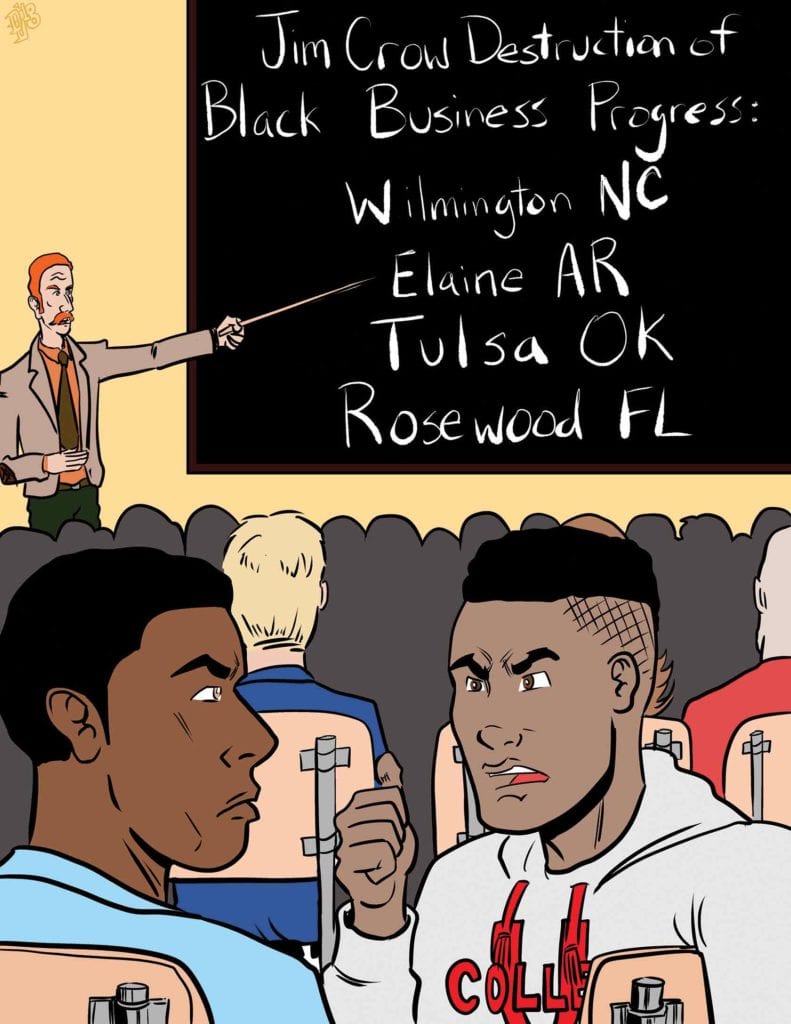
The New York Times recently reported the death of 103-year-old Olivia Hooker, one of the last survivors of and witnesses to the race-related attack on blacks in Tulsa, Okla., also known as the 1921 Battle of Tulsa.
Blacks in Tulsa had developed an ideal community with a thriving commercial area. There were restaurants, various retail stores, a movie theater, professional offices, a hotel and rooming houses, and a bank. The thriving black community, Greenwood, was sometimes referred to as the Black Wall Street.
Blacks from the South had migrated to Oklahoma to avoid Jim Crow. They were seeking a fresh start in a new state. Oklahoma was Indian Territory and did not become part of the United States until 1907. In a sense, blacks had hoped to outrun racism.
However, the development of the black Greenwood section of Tulsa was the envy of the area. When a young black shoeshine boy was accused of sexually attacking a white elevator operator, the unproved incident was sufficient provocation for whites to initiate an armed assault against blacks in Greenwood. Once they were under attack, blacks had to pick up arms to defend themselves. More than 300 blacks were killed and thousands were left homeless as the mob torched buildings in Greenwood.
This was the first time that American territory was bombed. Military authorities used crop dusters to drop incendiary devices on buildings in the black community. Devastation was so extensive that Greenwood never recovered its former glory.
Tulsa was not the first racial attack with an economic basis. In 1919, whites in Elaine, Ark. in Phillips County killed an estimated 100 to 237 blacks for having the temerity to establish a co-op of sharecroppers who wanted to sell their cotton at a better price and to prevent property owners from defrauding them. An armed assault on blacks who were assembled for a meeting became a massacre. Only five white deaths were reported.
Violence has been a common strategy of whites to impede black economic progress. In 1923, whites attacked blacks in Rosewood, Levy County, Florida. The black town had prospered according to reports as a whistle stop on the Seaboard Air Line Railway. With rumors of the sexual assault of a local white woman, irate whites decided to decimate Rosewood.
In addition to economic attacks on black towns, racial discrimination against individual black entrepreneurs has made it difficult for blacks to prosper in private enterprise. In the days of Jim Crow, it was unimaginable that a black-owned business would be able to compete in the marketplace against established whites. The risk of being able to overcome such an impediment was too high.
Many blacks are unaware of the Battle of Tulsa, the Elaine Arkansas Massacre and other violent racial attacks designed to destroy black economic success. However, those memories are implanted in the psyches of many African Americans. They become more faint with each generation. Young blacks now go to college for business and economic degrees. Business is now an area of activity that no longer requires a heroic level of risk.


![Banner [Virtual] Art Gallery](https://baystatebanner.com/wp-content/uploads/2024/04/Cagen-Luse_Men-at-store-e1713991226112-150x150.jpg)



